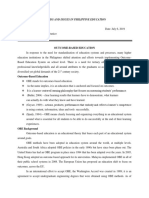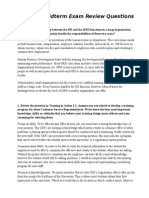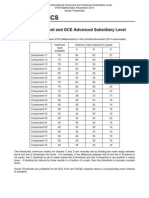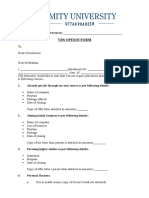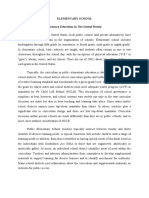0% found this document useful (0 votes)
61 views4 pagesModule 2 Lesson 2 The Instructional Cycle
This document discusses outcomes-based education (OBE) and the instructional cycle. It begins by explaining that OBE focuses on intended learning outcomes and involves planning instruction around outcomes, choosing teaching methods to achieve outcomes, and assessing student achievement of outcomes. It then defines OBE principles including clarity of focus on what students will know and be able to do, designing instruction down from outcomes, having high expectations for student performance, and expanding opportunities for students to achieve outcomes. Finally, it distinguishes between "enabling outcomes" which are smaller learning steps and "exit outcomes" which are the culminating demonstrations that students can apply their knowledge, using an example of science teaching.
Uploaded by
Ranz AbadCopyright
© © All Rights Reserved
We take content rights seriously. If you suspect this is your content, claim it here.
Available Formats
Download as PDF, TXT or read online on Scribd
0% found this document useful (0 votes)
61 views4 pagesModule 2 Lesson 2 The Instructional Cycle
This document discusses outcomes-based education (OBE) and the instructional cycle. It begins by explaining that OBE focuses on intended learning outcomes and involves planning instruction around outcomes, choosing teaching methods to achieve outcomes, and assessing student achievement of outcomes. It then defines OBE principles including clarity of focus on what students will know and be able to do, designing instruction down from outcomes, having high expectations for student performance, and expanding opportunities for students to achieve outcomes. Finally, it distinguishes between "enabling outcomes" which are smaller learning steps and "exit outcomes" which are the culminating demonstrations that students can apply their knowledge, using an example of science teaching.
Uploaded by
Ranz AbadCopyright
© © All Rights Reserved
We take content rights seriously. If you suspect this is your content, claim it here.
Available Formats
Download as PDF, TXT or read online on Scribd
/ 4

